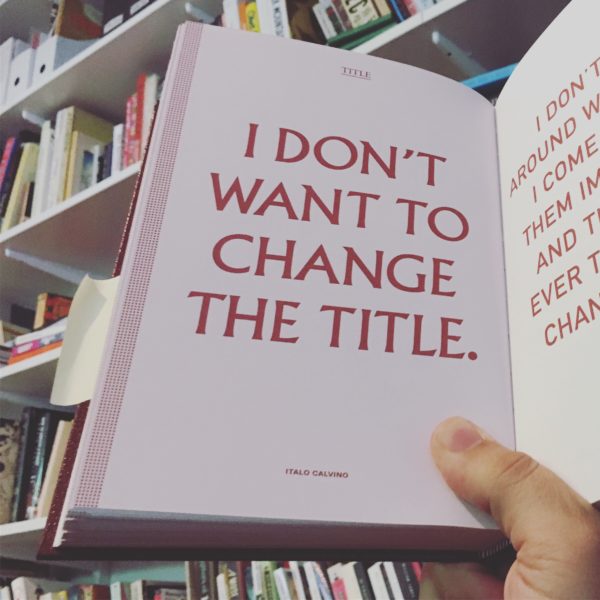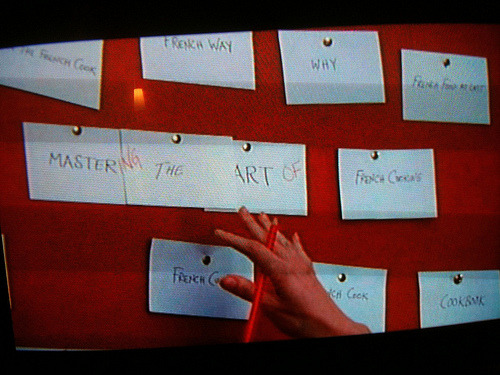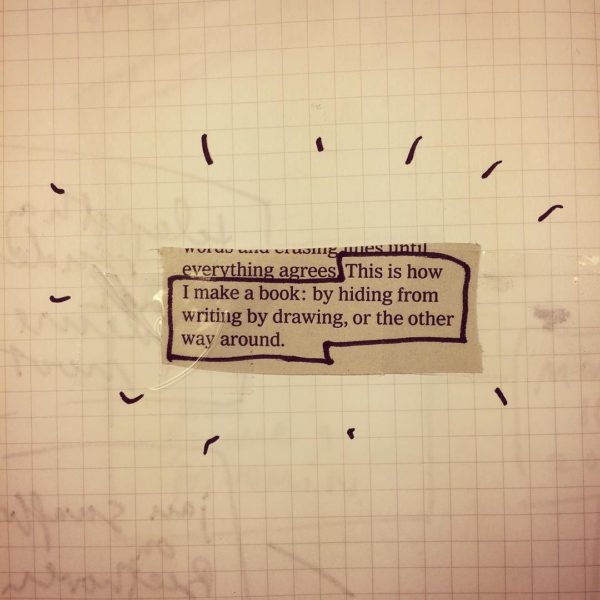“When I’m finished and the work is off the loom, it sits there and ruminates. Then it starts having a name in spite of myself.”
—Sheila Hicks
“Part of the impetus to name things is that if you don’t they get called Untitled, and that just gets to be a drag to have a thing referred to as ‘untitled.’”
—John McCracken
I’m one of those writers who likes to come up with the title for the piece first and then write the thing. That’s how my last two books worked, but now I’m working on this new book, and nobody can agree on any of the titles I’ve come up with so far.
In My Life in France, Julia Child writes about what a pain in the ass it was to come up with the title for Mastering The Art of French Cooking. She and her husband Paul debated “the merits of poetic titles versus descriptive titles.” They made lists and lists of titles, trying to come up with the right “combination of words and associations” that would work.
Editor Judith Jones (who got the original manuscript with the title “French Recipes for American Cooks”) finally came up with the title after “playing with a set of words like pieces of a jigsaw puzzle, trying to get them to fit together.” (Dramatized in the movie, Julie & Julia.) This seems to me like a totally sensible approach, so I’m stealing it: I’m writing words I like on index cards, and shuffling them around.
Still, even if you come up with a great title, there will be Unbelievers. Alfred Knopf, when he heard Jones’ title, supposedly shook his head and said, “I’ll eat my hat if anyone buys a book with that title!”
Above: pages from Every Day a Word Surprises Me and quotes from Art is the Highest Form of Hope.





